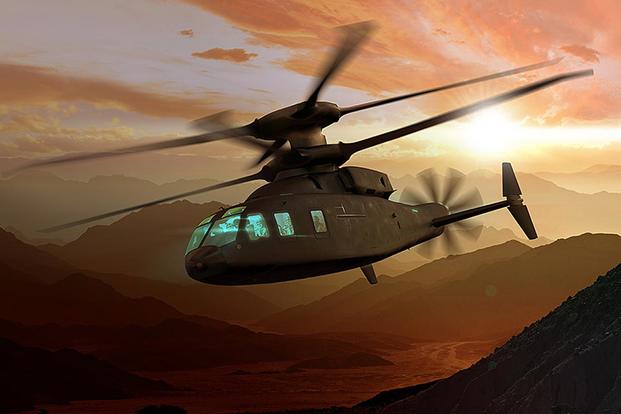U.S. Army conventional and special operations aviation officials on Thursday refuted a recent think tank report that claims the service's futuristic helicopters will be "blown out of the sky" by Russian anti-aircraft defenses.
Much of the Army's modernization effort is focused on penetrating advanced anti-access/area denial (A2/AD) networks -- ranging from sophisticated air defense systems to complex jamming weapons -- with long-range precision fires and a new generation of combat helicopters being developed under the Future Vertical Lift (FVL) effort.
The Royal United Services Institute, a United Kingdom think tank, wrote Sept. 4 that there would be "too many air-defense systems able to engage aviation to be suppressed or destroyed by air strikes or long-range precision fires during the critical stages of any high intensity clash."
"Against modern radars, flying low will not grant the same levels of protection as in previous generations," wrote Jack Watling, a research fellow at RUSI. "The reality is that an aviation unit flying over an area containing a Russian army formation will be blown out of the sky."
Related: As Future Vertical Lift Gets Underway, Army Eyeing Chinook Replacement
But Maj. Gen. Dave Francis, commander of the Army's Aviation Center of Excellence at Fort Rucker, Alabama, isn't convinced.
"I would argue that many of the folks out there that talk about the survivability of aviation are really using anecdotal examples," he told an audience at an Association of the United States Army aviation symposium.
The physics-based modeling that Brig. Gen. Walter Rugen's Future Vertical Lift Cross Functional Team "are doing right now is giving us data and giving us facts," Francis said.
"So, I would disagree with the think tank out there in terms of our ability to go after the threat in this highly contested environment," he added.
Rugen said that the Pantsir-S1 Russian surface-to-air missile system is the No. 1 threat facing the Future Attack Reconnaissance Aircraft and the Future Long Range Assault Aircraft -- FVL aircraft that the Army hopes to field beginning in 2030.
"We still believe and identity the Pantsir as our pacing threat, and we need to find, fix and finish it in quick fashion," he said.
There is also a new training effort led by Army Special Operations Aviation Command that may provide current and future helicopters crews the skills they need to survive against an advanced enemy threat, Brig. Gen. Allan Pepin said.
Two years ago, the 160th Special Operations Aviation Regiment launched the special operations advanced tactical training effort to stay ahead of enemy threats.
The three-phase approach starts at home station when the unit "brings in the experts that know about systems that will defeat aviation platforms out there, both fixed wing and rotor wing," Pepin said.
"Our crew members study this in-depth. They use new techniques to assess what the risks will be, and they do all this home-station training and then they ... do reps and sets in the simulators," he said.
Then, the unit travels to Naval Air Weapons Station China Lake in California to go against forces there trained on threat technology, Pepin said.
What's impressive, he added, is that the "people operating these systems know we are coming, they know that during these blocks of time we are going to come in with so many aircraft," but it doesn't make any difference.
"These are highly trained alert folks that know how to use the systems, know how to read the radar systems ... and the incredible thing, without going into classified systems, is we are able to enter the threat area, defeat the systems with a combination of current modernization efforts as well as tactics, techniques and procedures," Pepin said.
"They know there is something out there, but they can't lock on us, and so we are going to continue this process as we develop the FVL program because one of the questions here is how are we going to be able to demonstrate this," he said.
Since the program began, Special Operations Aviation Command has brought in conventional Army aviation units from the 101st and 82nd Airborne Divisions, as well as from other combat aviation brigades to show them the training, according to Pepin.
Francis said the lessons learned from the special-ops effort are now being incorporated into Army aviation doctrine.
"We have actually developed classified TTPs that are being proliferated throughout the aviation force right now," he said.
-- Matthew Cox can be reached at matthew.cox@military.com.
Read more: F-16 May Be the Only Air Force Fighter to Achieve Mattis' Readiness Goal, General Says












